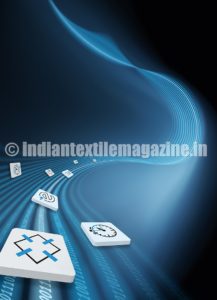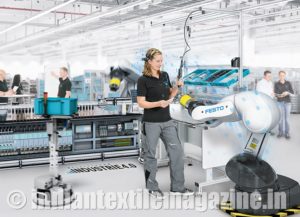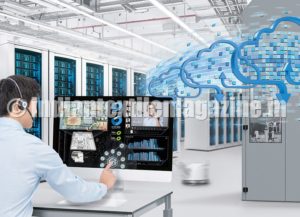Evolution & revolution in automation
The globalised markets are placing two key requirements on the manufacturing companies – greater speed in all entrepreneurial processes on the one hand and a broader range of individual options for the end consumer on the other. Digitalisation offers the necessary key technologies to meet these requirements. Information and communication technologies are merging with classical industrial mechanics to yield cyber-physical systems. Festo has been adapting to this development by creating new organisation units stressing the significance of digitalisation.
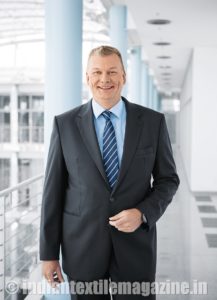
The consumers’ need for individual design of their products is currently giving rise to entirely new product worlds. Digitalisation is opening up interactive spaces for encounter between customers and manufacturers. The high speed of software development is a driving force in hardware development for machinery and plant construction. In parallel with this, cost-efficiently manufactured and rapidly available mass-produced goods are needed to cater to the quickly growing world population. The automotive producers must find ways of fulfilling both of these requirements. Dealing with this complexity and the increased speed of developments are a great challenge.
Dr. Ansgar Kriwet, Member of the Management Board Sales at Festo AG & Co. KG, commented at the 16th International Festo Press Conference in Paris: “We have very carefully examined and analysed our standing as a leading supplier of automation solutions for factory and process automation. We must on the one hand further develop our existing structures, products and processes, but on the other hand we also need completely new technologies, products and solutions.”
Digitalisation, a mammoth task
Supplying the steadily growing world population with the necessary goods can only be ensured by a highly automated production world. The needs of the consumers in the global markets differ very strongly in accordance with their state of development. The markets require constantly increasing speed. Dr. Kriwet said: “Digitalisation will accelerate processes within Festo, so that we can help our customers more rapidly. Digitally extended products from Festo accelerate our customers’ processes – from the machinery design process right down to service.”
Besides the mass production of goods, a trend has developed towards more and more individually adaptable products, which places heavy demands on the flexibility of production environments. The end consumers want to design and configure products for themselves – beginning with the car, through wearables such as watches or glasses, and up to the personalised dispensing of medicines and to self-designed pasta. This is all made possible by digitalisation.
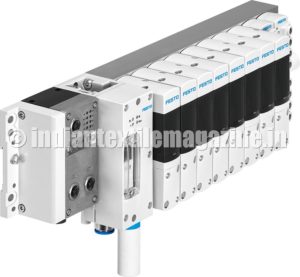
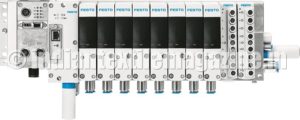 The family enterprise Festo, with over 18,800 employees, around three lakh customers worldwide and an overall range of more than 33,000 products, is advancing its own transformation process in two directions of impact.
The family enterprise Festo, with over 18,800 employees, around three lakh customers worldwide and an overall range of more than 33,000 products, is advancing its own transformation process in two directions of impact.
Evolution of the standard products
The core product range for high-quantity series production is still important. Success can only be achieved together with the customers. Dr. Kriwet said in this regard: “Reduced manufacturing costs and the preservation of resources are innovations that generate lasting added value.” Festo is therefore focusing its innovative power firstly on the development of new products for the more rapid, simplified manufacture of bulk goods; secondly, Festo is advancing digital penetration within the company in order to benefit from the advantages of Industry 4.0.
For Festo, evolution also means using investments in the infrastructure to secure lasting added value in a high-wage country such as Germany. The company has established one of the world’s most modern production lines at the Technology Plant in Scharnhausen near Stuttgart. Thanks to its modular structure, this facility is optimally prepared both for fully automated high-volume production and for highly flexible production in small batches. Festo manufactures its own products in its own factories. The company thus knows exactly how its products perform in everyday use.
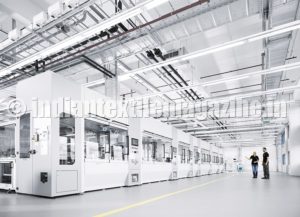
Robots are used wherever they can relieve the burden on the human operator and can form collaborative teams. The employees can acquire the new skills required for the production of the future in an integrated learning factory and at training stations.
Revolutionary products for the future
However, the leap into the future cannot be achieved by evolution alone. In order to survive, fundamental new concepts must be introduced in the product range. Festo has therefore also asked itself what revolutionary new products must look like: “How can largely mechanical products be transferred to intelligent cyber-physical systems? How can we boost our productivity and accelerate the supply chain? What additional benefits and what added-value models will these new products offer our customers in future? How can new tasks be assigned to machinery in the course of regular operation? How can the operator communicate with them better and make them even more versatile?”
Festo Motion Terminal
Here is the answer: Just as the smartphone turned the mobile communication market on its head a decade ago, so too the Festo Motion Terminal will turn automation technology on its head, so too the Festo Motion Terminal is set to revolutionise automation technology. The new method of function integration, combined with software apps, will simplify the entire value chain, since only one piece of hardware will be required. The apps can replace over 50 individual components. Beneath the somewhat unassuming exterior and classic Festo product design lies technical refinement based on state-of-the-art information technology.
Piezo technology, integrated stroke and pressure sensors together with control via motion apps will open up entirely new perspectives for machinery and plant manufacturers. The fusion of mechanics, electronics and software featured in the Festo Motion Terminal will transform a pneumatic product into a true Industry 4.0 component, and enable flexible production. Changes in pneumatic functions and adaptations to new formats are controlled via apps by changing parameters. The integrated intelligent sensors for control, diagnostics and self-learning tasks will eliminate the need for additional components.
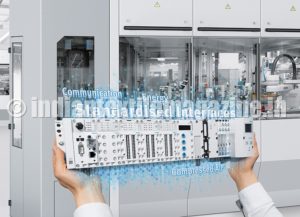
Digitalisation of the customer interface
The manner of co-operation with customers is also rapidly changing. Along with the classic sales channels, customers are increasingly using the company’s online product catalogue to immerse themselves into the virtual world. Festo speaks here of the “digital customer journey”. This catalogue shows in digital form all of the contact points – from the engineering process with CAD tools, via product selection, configuration, virtual initialisation, up to monitoring over the entire product life cycle.
“Digitalisation enables our customers to design, simulate and operate their production systems as a virtual twin. They thus already know in advance whether the modules of their systems will work together as desired. The complexity of flexible, adaptive production is made controllable through integrated intelligence,” said Dr. Kriwet in Paris. The data acquired during operation of the systems open up completely new insights into the processes and machinery conditions.
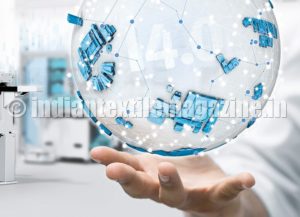
Cloud applications process the resource data into valuable information in real time. Anticipatory maintenance reduces the risk of machine downtime and production losses. Surveillance of temperature curves, compressed air consumption, wear data or mixing ratios, and locating leakages are just some examples of the possibilities now open to operators. A “machinery memory” of the processes is generated that provides the basis for optimal configuration and parametrisation.
